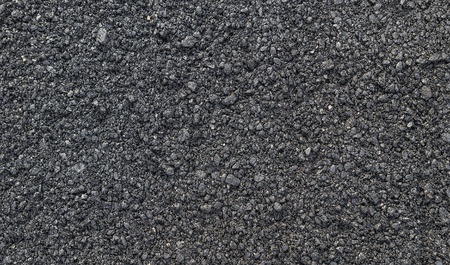Experience the Distinction: Hot Mix Asphalt Paving for Regrading Projects
Unlocking the Secrets of Warm Mix Asphalt Technology
Discovering the depths of hot mix asphalt technology reveals a world where precise formulations and meticulous processes assemble to form our roadways and facilities. The blend of accumulations, fillers, and binders isn't merely a building job yet a tactical orchestration of resilience and effectiveness. As we peer right into the intricate dancing of parts, a tapestry of durability and sustainability unfolds. What lies below this surface area of asphaltic proficiency, and what secrets wait to be revealed in the world of leading advancements?
Value of Warm Mix Asphalt
Warm Mix Asphalt plays an essential role in contemporary infrastructure development due to its durability and cost-effectiveness. As the most generally made use of leading material for roadways, highways, and parking lots, Hot Mix Asphalt offers a range of advantages that contribute to its significance in construction projects.
The sturdiness of Hot Mix Asphalt originates from its composition, that includes aggregates, binder, and filler products that are carefully picked and mixed to satisfy details efficiency needs. This precise mix causes a flexible and strong sidewalk that can withstand regular usage without significant wear and tear. In Addition, Warm Mix Asphalt is 100% recyclable, additional improving its sustainability and environmental advantages. In general, the significance of Warm Mix Asphalt in facilities advancement can not be downplayed, as it remains to be a foundation of modern-day building practices.
Parts of Asphalt Mixes
The composition of asphalt mixes consists of thoroughly chosen accumulations, binder, and filler materials that are essential for accomplishing certain efficiency demands. Accumulations are the key part of asphalt blends, supplying strength and stability. The binder, usually bitumen or asphalt cement, holds the aggregates with each other and provides versatility and durability to the mix.
The mix and proportion of these components play a significant role in determining the high quality and performance of the asphalt mix. Engineers carefully make the mix to fulfill specific needs, considering aspects like traffic quantity, environment problems, and sidewalk life-span. Correct choice and harmonizing of accumulations, binder, and fillers are necessary for producing long lasting, resilient asphalt pavements.
Combining and Production Methods

Once the aggregates are selected, the binder, typically asphalt cement, is contributed to bind the products together. The binder's quality and amount substantially affect the mix's resistance, strength, and flexibility to environmental factors. Additionally, fillers like moisturized lime or Portland concrete might be integrated to boost details attributes of the asphalt mix, such as its workability or dampness resistance.
During manufacturing, the accumulations and binder are warmed, usually in between 250-325 ° F(121-163 ° C ), to assist in mixing and make certain proper finishing of the accumulations. The blending procedure must be thorough to achieve a homogeneous mixture that promotes the desired performance attributes of the asphalt. Different techniques, such as batch mixing or drum mixing, are utilized to attain regular and high-grade asphalt mixes for building and construction jobs.
Factors Impacting Asphalt Performance
Elements affecting asphalt efficiency incorporate a series of variables that impact the longevity, longevity, and overall high quality of asphalt pavements. One vital element is the top quality of products made use of in the asphalt mix. The kind and source of aggregates, the binder quality, and the additives all play a substantial duty in figuring out the efficiency of the asphalt pavement. The gradation of aggregates is vital as it impacts the mix's security, workability, and resistance to cracking and rutting.

Ecological conditions also influence asphalt performance. Temperature variations, dampness seepage, and web traffic loads can all influence the architectural stability of the sidewalk. Design factors to consider, such as sidewalk density and check my reference water drainage, are necessary in making certain the long-lasting performance of the asphalt sidewalk. By very carefully thinking about these elements, contractors and designers can optimize asphalt efficiency and enhance the life span of sidewalks.
Sustainable Practices in Asphalt Modern Technology

Furthermore, the growth of warm-mix asphalt (WMA) modern technologies has gotten grip recently. WMA permits for the production and positioning of asphalt blends at lower temperature levels contrasted to conventional hot-mix asphalt, leading to reduced energy intake and greenhouse gas exhausts. Additionally, making use of permeable asphalt blends can aid minimize stormwater overflow problems by permitting water to penetrate through the pavement and into the ground, advertising natural water purification and reenergize processes. By executing these lasting techniques, the asphalt industry can contribute to developing a more eco friendly and resilient framework network.
Verdict
In final thought, warm mix asphalt technology plays an important function in contemporary infrastructure growth as a result of its durability and cost-effectiveness. By carefully stabilizing components, using appropriate mixing methods, and considering different factors, designers can create high-grade asphalt blends that stand up to hefty web traffic lots and harsh weather. Embracing sustainable techniques, such as utilizing warm-mix technologies and recycled products, further enhances the environmental friendliness of asphalt innovation.
Blending and production methods in warm mix asphalt technology include the precise mix and explanation handling of aggregates, binder, and fillers to create a durable and high-performance asphalt mix.Factors affecting asphalt performance incorporate an array of variables that influence the toughness, longevity, and overall top quality of asphalt sidewalks. Sustainable techniques in asphalt technology encompass different campaigns aimed at lowering the ecological effect of asphalt production and paving processes. By incorporating recovered asphalt sidewalk (RAP) and recycled asphalt tiles (RAS) right into brand-new asphalt mixes, the sector can significantly minimize the intake of raw materials and power, while likewise lowering garbage dump waste.
WMA permits for the manufacturing and positioning of asphalt mixes at reduced temperatures contrasted to standard hot-mix asphalt, resulting in lowered power consumption and greenhouse gas emissions.